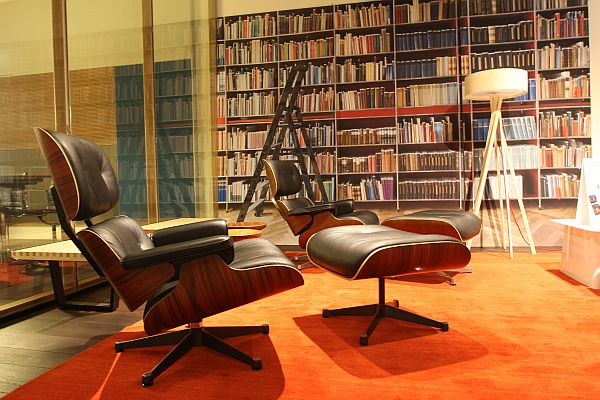As many of you know we don't do trends. Never have. Never will.
But others do.
And back in 1964 the trend in West Germany was leather furniture. At least according to Der Spiegel.
In "Haut und Haare", a delightful article, that admittedly probably shouldn't be read by anyone planning buying a Barcelona Chair for Christmas, the unnamed Spiegel author not only explains just how much of a trend leather had become in the West German living rooms of the day, but exhibits a wonderfully casual acceptance of illegal copies.
And shows how times have changed.
For example it, somewhat sweetly, refers to "The company W. Fehlbaum, Weil am Rhein, ...." As far as we're aware the company was officially called Vitra in 1964; but obviously the name wasn't considered important or familiar enough to warrant being mentioned.
For as indicated in our piece on "Design in Use, USA", the designer furniture industry is genuinely a lot younger than many of us realise.
Young. But maturing.

Back in the day when the world was still in black and white, Der Spiegel and other serious newspapers and magazines regularly featured researched background articles on the designer furniture industry. Indeed up until 2000 Der Spiegel - and we're honestly not being sponsored by them, they're just a very good example - had "Furniture" as a regular feature category in their Culture section.
Then they stopped. Until recently. When the subject came back as "Design"
We genuinely nearly chocked on our cornflakes when we saw they had published a background piece on Vienna Design Week 2011. A background piece! With an interview!
This switch from "Furniture" to "Design" is characteristic of a development that effectively began back in 2010 when The Guardian appointed the highly experienced and respected architecture and design journalist Justin McGuirk as "Design Correspondent" A decision that caused other publications to sit up, take notice and move occasional design pieces from the "arts" section into their own category.
And so slowly but surely a subject that for a decade has been the sole preserve of blogs is becoming mainstream.
We obviously welcome the introduction of all high profile publications into the design discourse - not least because we hope that it helps filter out those charlatans whose modus operandi is reprinting press releases and photos in the hope of getting good Google rankings and so generating advertising profit.
However it would be a shame if those journalists covering design for the mainstream press lost sight of the "furniture industry" aspect.
For we firmly believe the designer furniture industry, and those designers who hope to make a living from it, would be better served by a press that properly analyses, questions and criticises rather than by the current crop of servile B2B publications who equate content with advertising revenue.
In that sense we're obviously looking forward to seeing how #milanuncut develops in 2012.
And if Der Spiegel join the debate.
Yes, that is a direct challenge to the colleagues in Hamburg
Haut und Haare is a "trend" piece, and it admittedly isn't a trend piece that asks any especially hard questions. But in its style and attitude it is a trend piece that reminds us that designer furniture journalism can be more than fawning sycophancy. How many publications today would have the confidence to print a quote from a modern Egon Eiermann denouncing all furniture designers as plagiarists?
And for us the article ends with the heartwarming news that one person shares our distrust of trends and was bucking the leather fashion of the day - West German Chancellor Ludwig Erhard who had ordered 16 Eames Lobby Chairs for Bonn. In fabric. Not leather.
